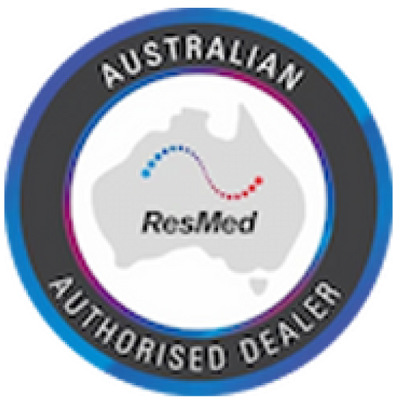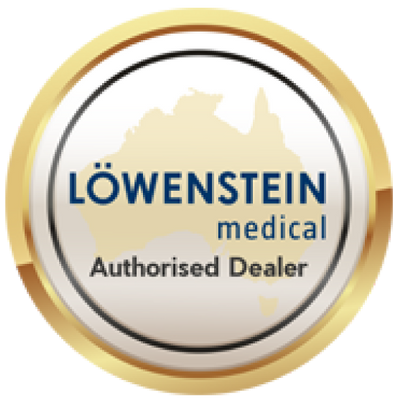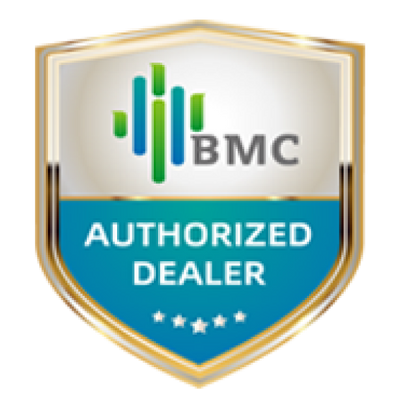If you love camping but have sleep apnoea, you might be worried about how it’ll impact your CPAP therapy. Questions like, “How will I charge my machine?” and “Can I even continue my CPAP therapy?” might come to mind. Well what if we told you that going camping doesn’t have to mean giving up your CPAP therapy?
CPAP brands have addressed these concerns, developing new gear and accessories made with campers in mind, with plenty of travel solutions now available on the market. In this guide, we’ll go over everything you need to know to enjoy a restful night’s sleep under the stars while having uninterrupted therapy, including:
- Misconceptions about CPAP and camping
- Top travel CPAP machines for camping
- Powering your CPAP off-grid
- Maintaining your CPAP while camping
- Tips for a better CPAP experience while camping
Can You Really Use a CPAP Machine While Camping?
Yes, you really can use a CPAP machine while camping. While it may be tempting to put it on pause while camping, it isn’t the best for your therapy outcomes, since consistency is the key to its effectiveness. You may experience increased discomfort from poorer sleep, taking a toll on your energy levels and enjoyment of the trip. Even short-term withdrawal can increase blood pressure and heart rate. Thankfully, camping with a CPAP machine isn’t as difficult as it seems, all you need is a travel-friendly setup.
CPAP machines need to provide a continuous flow of pressurised air into your airways throughout the night, so they need a reliable source of power. At home, you would typically plug your machine into a ‘main power source’ (i.e., an AC wall outlet). But most CPAP machines can also run on DC power when you’re on the go. However, because you are travelling, the amount of power and the size of your regular CPAP machine make it inconvenient to bring on a camping trip.
Here is where portable, battery-powered CPAP units save your day (and night). These machines are a fantastic alternative to your home-use CPAPs, as they are designed with your travel needs in mind. The last 10 or more hours without needing to be plugged into a main power source. To charge them, you can use smaller, portable batteries, similar to how you can use a portable charger for your phone when you don’t have access to a wall outlet.
Top CPAP Machines For Camping
While you can bring your regular CPAP machine while camping, it’s not always the most convenient option. They’re larger, heavier, and if you use a humidifier, you’ll need to carry bottles of distilled water. Just another thing to pack on top of the rest of your CPAP and camping equipment.
Travel CPAPs on the other hand, are smaller, lighter, and designed with travellers in mind. While they aren’t as comfortable as the full-size models, they are perfectly functional and ideal for travelling.
To narrow down your options, we’ve collected three of the best travel CPAP machines on the market so you don’t have to. All these models connect with apps to view your sleep reports on your phone, so there’s no need to worry about buying an extra SD card.
ResMed AirMini
The ResMed AirMini, from one of the leading CPAP manufacturers, is a standout choice for campers seeking portability and performance. Weighing only 300g and operating at a quiet 30dB, this compact device is easy to pack and use on the go. The AirMini connects seamlessly with the AirMini app, allowing you to track your sleep and adjust settings conveniently from your phone. For those who usually use a humidifier, you can enjoy comfortable therapy without lugging bottles of distilled water, using ResMed’s HumidX waterless humidification filter (sold separately). Despite its small size, the AirMini delivers the same effective therapy as ResMed’s full-sized models, so you don’t have to compromise on quality. Note that it is compatible only with ResMed AirFit and AirTouch masks by default, but we do have a universal hose connector and standard CPAP tube bundle available, so you can use any other mask you like. Its robust design is built to function reliably in a wide range of climates, making it ideal for camping in diverse conditions.
Size and Weight:
- 136mm (W) x 84mm (D) x 52mm (H)
- 300g
Power Specifications/Compatibility:
- AC input: 100-240V, 50-60Hz, 0.5-0.3A
- DC output voltage: 24V
- DC output current: 0.83A
Environmental Conditions:
- Operating temperature: +5°C to +35°C
- Operating humidity: 10% to 95% relative humidity (non-condensing)
- Operating altitude: Sea level to 8,500′ (2,591 m); air pressure range 1013 hPa to 738 hPa
Storage and Transport:
- Storage and transport temperature: -25°C to +70°C
- Storage and transport humidity: 5% to 95% relative humidity (non-condensing)
If you’re interested in this machine, check out our ResMed AirMini Camping Bundle, which covers everything you need to go camping.
Transcend Micro
Living up to its name, the Transcend Micro goes above and beyond to ensure you breathe comfortably, even with its small size. Weighing only 219.5g and operating at 27dB, the Transcend Micro is one of the lightest and quietest travel CPAP machines out there. Its low noise level is particularly important if you’re camping with others or have a sensitive sleeping environment. Standout features include automatic pressure adjustments and a customisable ramp feature, which gradually increases the air pressure, helping to ease you into therapy (and minimise mask leaks). Additionally, the EZEX Pressure Relief, which reduces pressure as you exhale. The Transcend Micro also has a unique dry-cycle function that dries out the CPAP hose within 30 minutes, helping prevent mould and mildew growth. Along with these handy functions, the Micro comes with a 1.83m AirFlex hose and an AirMist HME kit, both of which are compatible with most standard 22mm connection masks (no extra equipment required), making it the only travel CPAP machine that provides both universal compatibility and waterless humidification with no extra equipment needed.
Size and Weight:
- 91mm (W) x 91mm (D) x 91mm (H)
- 219.5g
Power Specifications/Compatibility:
- AC input: 100-240V at 50-60Hz, with a maximum current draw of 1A
- DC output: 19V at 2.1A
Environmental Conditions:
- Operating temperature: +5°C to +35°C
- Operating humidity: 10% to 80% relative humidity (non-condensing)
- Atmospheric pressure: 760-1060cmH2O
Storage and Transport:
- Storage and Transport Temperature: -20°C to +60°C
- Storage and Transport Humidity: 10% to 90% relative humidity (non-condensing)
If you’re interested in this machine, see our Transcend Micro Camping Bundle, which has everything you need for a camping trip.
BMC M1 Mini
Another solid option is the BMC M1 Mini. Weighing under 400g and operating at less than 30dB, its size doesn’t mean it skimps on performance. The M1 Mini has plenty of features to adjust your therapy to your comfort, including waterless humidification, auto-adjusting pressure, and a customisable ramp. You can control your settings and track your progress via the BMC Mini App. It’s compatible with most standard CPAP masks (except HME masks, which require a compatible BMC mask), offering flexibility when choosing the right mask for your therapy. Plus, the M1 Mini is designed to operate in a range of environmental conditions, temperatures, and humidity levels. Whether you're camping in the mountains or by the beach, you’ll know you’re covered.
Size and Weight:
- 159mm (W) x 66mm (D) x 72mm (H)
- Under 400g
Power Specifications/Compatibility:
- AC input: 100-240V, 50-60Hz, with a maximum current draw of 1A
- DC output: 19V, 1.26A
Environmental Conditions:
- Operating temperature: +5°C to +35°C
- Operating humidity: up to 93% relative humidity (non-condensing)
- Atmospheric pressure: 760-1060 cmH2O
Storage and Transport:
- Storage and Transport Temperature: -25°C to +70°C
- Storage and Transport Humidity: up to 93% relative humidity (non-condensing)
If you’re interested in this machine, check out our BMC M1 Mini Camping Bundle, which includes everything you need to go camping.
Powering Your CPAP Off-Grid: Options & Setups
When it comes to charging your CPAP off-grid, you are spoiled for choice. Whether you’re directly under the stars or in your caravan, there are two main ways to power your CPAP: portable CPAP batteries and solar panels. In this section, we’ll look at the features of some of the best batteries and solar panels on the market to make your perfect power setup.
CPAP Batteries
Using a CPAP battery is similar to using a portable charger for your phone – in fact, most have USB-A and USB-C ports, meaning you can also use it to charge your phone, tablet or laptop. The main difference is that these batteries are made for medical devices, meaning they hold more power to reliably run your CPAP machine. For campers, that extra power can make the difference between a restless night and waking up refreshed. The following are some of the most popular batteries for charging CPAP machines on the go.
Zopec Explore Mini
The Zopec Explore Mini is currently the smallest and lightest CPAP battery available, weighing only 0.45kg and measuring 16.5cm x 7.6cm x 2.5cm. It features USB-A and C ports and comes with three DC outputs, so you won’t need any converters. It also features multi-voltage compatibility that automatically adjusts to your CPAP machine, meaning there’s no need to fiddle with settings. It has an uninterrupted power supply (UPS), allowing CPAP to keep running even if the power goes out. On a single charge, it delivers 16-24 hours of runtime without a humidifier or heated tube. With a humidifier in use, you can expect up to 7 depending on your pressure settings, which is still enough to last through the night. If you want extended runtime, you can connect multiple batteries together for even longer use. In terms of cables, the Explore Mini includes everything you need to power a ResMed AirMini, AirSense 10, or AirSense 11. For other CPAP machines, Zopec makes compatible cables sold separately. Best of all, the Explore Mini recharges in under 2 hours with its 65W USB-C charger, which is fast and convenient for camping trips where power access may be limited.
Zopec Explore 5500
A step up in size from the Mini is the Zopec Explore 5500, which packs a bigger punch. If you need something with more charge and don’t mind packing a little extra (weighing 1.4kg and measuring 20.6cm x 15.2cm x 5.1cm), this battery is a powerhouse choice. Offering a runtime of 16-24 hours (without a humidifier or heated tube), this 160Wh ‘plug and play’ battery is compatible with all CPAP brands and models, meaning there’s no need to adjust the voltage or get separate adaptors. The Zopec Explore 5500 can support humidifier use without a heated tube, though using it cuts the runtime down to around 8 hours (the recommended amount of sleep for adults). With a universal AC outlet (100-240V, 50-60Hz), a 45W car charger, and a solar panel (sold separately), you won’t be short of charging options. It is also equipped with a UPS like its smaller counterpart, but more advanced. Using a Zero-Time Automatic Switch, it instantly goes to battery power the moment the power cuts, for uninterrupted sleep for you.
Medistrom Pilot Flex
The Medistrom Pilot Flex is another popular option for campers who need a portable CPAP battery. It's designed to work with most major CPAP machines that run on 12V or 24V using Dual Voltage Technology to detect your machine’s voltage and adjust itself. With a capacity of 98Wh, it offers a runtime of up to 16 hours. To recharge, you only need to wait 2-3 hours using a CPAP AC adapter, 4-6 hours using the 45W USB-C charger, and 7-9 hours using the ResMed AirMini adapter. It has a lifetime of around 500+ full charge cycles, and when not actively in use, it goes into sleep mode to conserve power and maximise usage. Weighing around 0.5kg and measuring 17cm x 8cm x 2cm, it should be easy to carry and won’t take up much space in your tent.
Transcend Micro PowerAway P8
Transcend PowerAway P8 can provide up to 17.5 hours of therapy on a single charge (equal to around two nights of use). Users should note that this is the estimated runtime with or without heating tubing or a humidifier. When pressure settings are higher, overall runtime may be reduced. Once plugged in, it should charge in under 4 hours and last 1,000+ charge cycles for long-term performance. It weighs 473g and has dimensions of 12.9cm x 13.2cm x 3.3cm, making it one of the most portable CPAP batteries on the market.
ResMed Power Station II V2
Weighing in at 0.9kg and measuring 23cm x 12.6cm x 2.6cm, the ResMed Power Station II V2 is a ResMed exclusive. Running for 11-14 hours, its compatibility is limited to certain ResMed machines. These include the AirSense 10, AirCurve 10, Lumis 10, and Stellar 10 series.
Solar Panels
Whether you want to be more environmentally conscious or need a backup for a power outage, solar panels are a fantastic option. Not only are they foldable and lightweight, but they can charge your battery in 3-12 hours (depending on the solar panel). Simply connect your battery to the solar panel, leave it in direct sunlight, and it will be ready to use by the time bedtime rolls around.
Keep in mind, its effectiveness depends on weather conditions, since if there isn’t a lot of sunlight, your machine won’t charge as much. Regardless, solar panels are still a great way to charge your machine if you love to explore nature, since you are not limited to only camping at sites with electricity sources, allowing you to set up wherever you like.
When purchasing a solar panel, you need to check if it's compatible with your battery. Zopec, Transcend, and Medistrom all have their own solar chargers, so choosing the right one should be easy once you’ve got your battery.
Zopec Explore Mini 40W-Lite Compact Solar Panel
Zopec Explore Mini 40W Lite is a great choice for campers looking for a compact yet powerful solution. Delivering fast 40W DC solar charging at 23% conversion efficiency, it is highly compatible with all Zopec Explore and Zopec Voyage batteries. Under full sunlight, it can charge these batteries in 3-4 hours, ensuring you’re ready for a full night of sleep. The panel folds neatly into a slim package weighing just 2.05kg and measures 35.6cm x 24.1cm x 2.5cm when closed, making it easy to carry and store with the rest of your gear. Moreover, its dustproof and waterproof design makes it strong enough to withstand a variety of environmental conditions.
Zopect Explore 5500-Pro SMART Solar Panel
If you’re looking for the perfect solar charging companion for the Zopec Explore 5500 and other larger Zopec batteries, the 5500-Pro SMART Solar Panel is the way to go. It’s a highly efficient panel that delivers 60W DC charge with 23% conversion efficiency. Depending on weather conditions, it can charge your battery in between 4-8 hours. The panel weighs 2.27kg and folds down to 40.6 cm x 50.8cm x 2.5cm for portability, with its dustproof and waterproof materials making it extremely durable.
Transcend Portable Solar Charger
For an off-grid charging option for Transcend’s PowerAway P4 and P8 batteries, the Transcend Portable Solar Charger is a great choice, coming in at 500g and around the same size as a folded newspaper. While it takes longer to charge than other panels (12 hours in full sun), its PowerFilm Solar technology helps provide consistent charging under sunlight, even in low-light. Its small size, combined with its waterproof, military-style material, makes it a compact, reliable option for short camping trips in the rugged outdoors.
Medistrom Portable 50W Solar Panel
With a 50W DC output, the Medistrom Portable Solar Panel is equipped to recharge Medistrom Pilot-12 Lite and Pilot-24 Lite batteries within 5-9 hours under direct sunlight. The 560g unit features a foldable design that measures 17cm x 9cm x 2cm when packed, allowing for easy transport and storage. It conveniently comes with charging cables for the Medistrom Lite, so you don’t have to buy them separately.
Maintaining Your CPAP While Camping
When it comes to camping, it is inevitable that your things will get a bit dirty, including your CPAP equipment. While you may not have access to the same amenities you have at home, it is still important to keep your CPAP clean. For example, a lack of cleaning can lead to moisture build-up, which may encourage mould growth and potentially worsen health problems.
The easiest way to do so is to wipe down your equipment every morning with CPAP wipes. These are specifically for CPAP and contain no harsh chemicals, so that they don’t harm you or your gear.
If you’re looking for a more high-tech way to clean (and have the space), a portable sanitising machine such as the Lumin is a fantastic option. It uses UVC light to disinfect up to 99.9% of germs, bacteria, pathogens, fungi, and mould. Simply pop your CPAP mask and accessories in the tray, and they will be sanitised within 5 minutes. It doesn’t use water, chemicals, or disposable making it an environmentally friendly add-on to use after you’ve cleaned your equipment with wipes.
To protect your equipment from dust and dirt, it may also be worth packing a CPAP dust cover. These covers are lightweight and flexible, meaning they won’t take up too much space. They also have the bonus effect of helping reduce the noise made by your machine.
Once you return from your trip, don’t forget to properly clean your CPAP at home. Whether you’re wiping down your CPAP at a campsite or doing an in-depth at home, be sure to disconnect your machine from its power source.
By investing in a simple maintenance routine, you can extend the life of your travel CPAP gear and prevent additional health problems.
Tips for a Better CPAP Experience While Camping
Now that you’re more familiar with what travel CPAPs and charging options are available, you’re probably wondering how to make your setup work while camping. At home, power and CPAP gear are available at your fingertips. If you’re a seasoned user, everything has its place, and you likely have a set routine. However, when conditions are a little more unpredictable, it’s easy to feel overwhelmed by the practicality of maintaining quality therapy. That’s why we’ve got these simple tips to help put you at ease while camping with CPAP.
CPAP Camping Checklist
When packing for any camping trip, it is always good to have a checklist of everything you need before you go, including your CPAP equipment. The last thing you want is to have forgotten something when you’re hours away from home.
The essentials you need to pack include:
- Travel CPAP machine
- CPAP mask & cushions
- CPAP tube/hose
- Battery & charging cables
- CPAP wipes
- CPAP filters
- Travel case
There are also other items you can bring to enhance your setup, depending on your needs. These pieces of equipment will be discussed in more detail later in this guide:
- Solar panel
- Heat moisture exchange (HME) capsules
- Hose connector
- Muffler
- Dust cover
- Lumin cleaning machine

Having a CPAP checklist is great, not only for preparation, but for ensuring that you don’t leave anything at the campsite when the trip is over.
Test your power setup at home
Imagine it’s been a long day of exploring the great outdoors. After a hearty meal by the fire, you’re about ready to snuggle up in your sleeping bag and recharge… only for your CPAP gear to not work.
This can all be avoided by testing your power setup at home before your camping trip to ensure everything is working. That way, you can troubleshoot, replace faulty equipment, and ensure you have enough charge.
Additionally, it makes for good practice if you haven’t used a travel CPAP machine before. Getting familiar with your device before leaving will make setting it up on the actual trip more seamless, allowing you to focus on getting a good night’s sleep.
Backup plan, what to do if the battery fails
With any sort of travel, it’s always best to plan for the unexpected. Even if you’ve tested your setup at home, things can still occasionally go wrong, like your battery failing. A battery can fail for several reasons, such as exceeding operating environmental ranges or simply reaching the end of its lifespan.
If you have the space and budget for it, having a fully-charged backup battery is a good idea, especially for trips lasting more than one night. Even if you forget to charge your main battery, you’ll be ready to rest using your second battery.
If there are electricity sources available near your campsite, you can bring your CPAP’s original AC power cord to plug it into an available wall outlet. Alternatively, if you are camping with your car or caravan, you can plug it into your vehicle’s DC outlet using a DC/DC car charger.
CPAP Mask Fit & Sleep Tips
So you’ve got your CPAP and power setup sorted, but what about the little things that can make or break a good night’s sleep? From keeping your mask comfortable to bringing spare accessories, these simple tips can make camping with a CPAP feel restful while maintaining effective therapy.
Tips for keeping your mask on outdoors
Sleeping in a new environment can impact how well you rest, so making sure your CPAP mask fits comfortably is especially important while camping.
If you’re in the market for a new mask, most will have a printable fitting guide to help you find your perfect size. Before your camping trip, it’s also worth trying on your mask at home. Check the straps aren’t too loose or tight and that the cushion sits comfortably on your face. A proper fit can improve your comfort and reduce the chances of waking up due to air leaks. By checking your mask fit at home, you won’t have to worry about adjusting it while you’re on the go.
If you need a humidifier, we recommend using an HME mask and/or HME capsule to maximise your comfort during your trip. These clever attachments help keep moisture in and prevent drying out your airways, without the need for bottles of distilled water. This is particularly relevant if you are camping in a cold or dry area. Different travel CPAPs have different HME requirements, specified below:
- ResMed AirMini: needs HumidX capsules that attach between the mask connector and the vent.
- Transcend Micro: has waterless humidification built-in to the device.
- BMC M1 Mini: needs either the BMC N5H, N5HA or P2H mask to experience waterless humidification. Replacement HME capsules for these mask models are also available.
For campers who tend to breathe through their mouths, using a chin strap can improve therapy effectiveness by preventing air from escaping the mouth and reducing dryness.
Bring spares (mask, filters, cushions)
Camping can be unpredictable, and with anything you pack on your trip, you never know if something will happen to your travel CPAP setup. You could run out of consumables or even have your equipment ruined or broken. And as amazing as it would be, you can’t just order spare parts to your campsite, so having backup supplies could save your trip from being cut short. Items you should consider bringing spares of include:
At the end of the day, it is far better to be over-prepared, than being underprepared and stuck miles away from home without anything to fall back on.
In summary, camping doesn’t have to mean giving up your sleep apnoea therapy, or your comfort. With a little preparation, the right equipment, and a good backup plan, you can enjoy your camping experience while still getting a full night of restful, effective sleep.
Whether you're heading off-grid for a weekend escape or going on a multi-day adventure, modern CPAP solutions have made camping with a CPAP machine easier and more convenient than ever. From compact travel machines and battery packs to portable solar chargers and cleaning solutions, your setup can be as mobile as you are.
Planning a trip of a different kind soon? Check out our other bundles tailored for different trips here.





